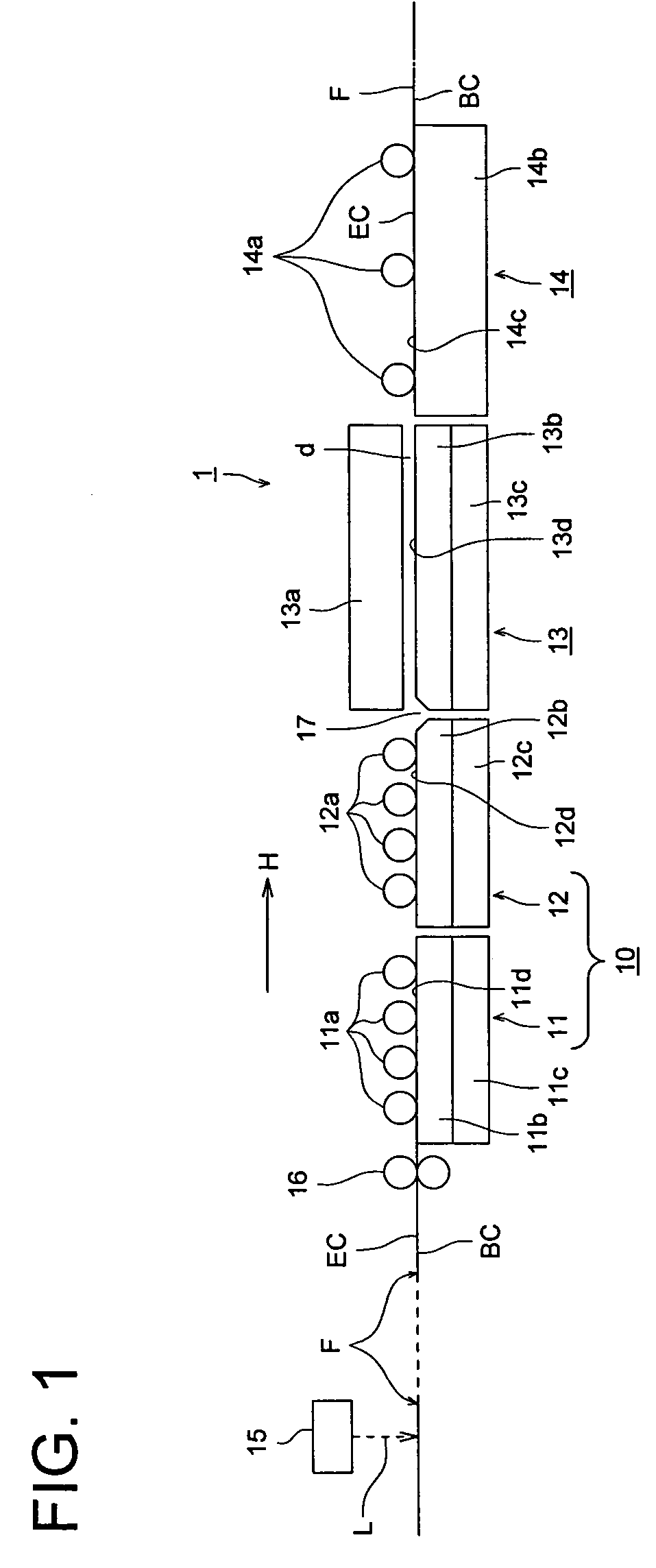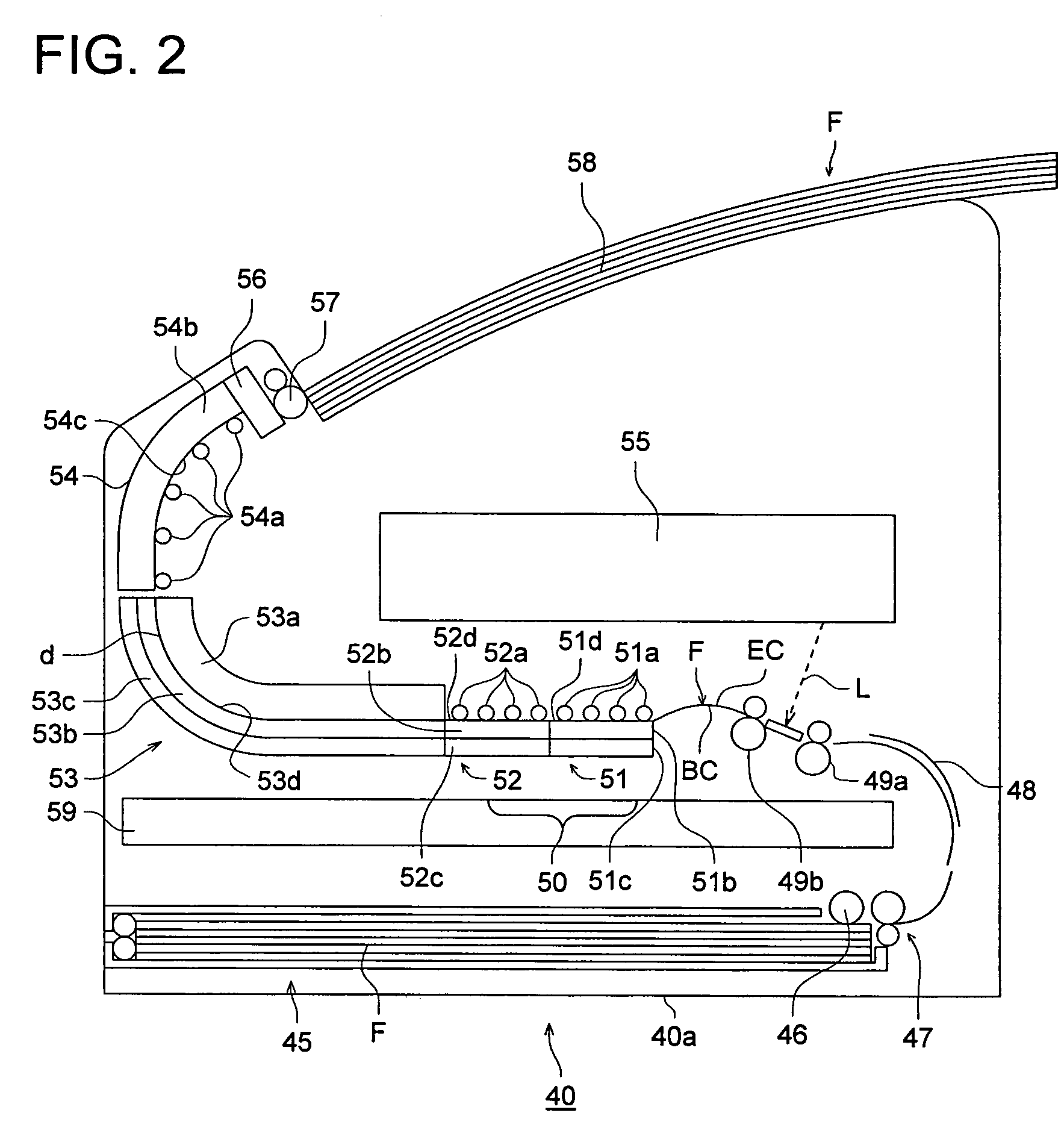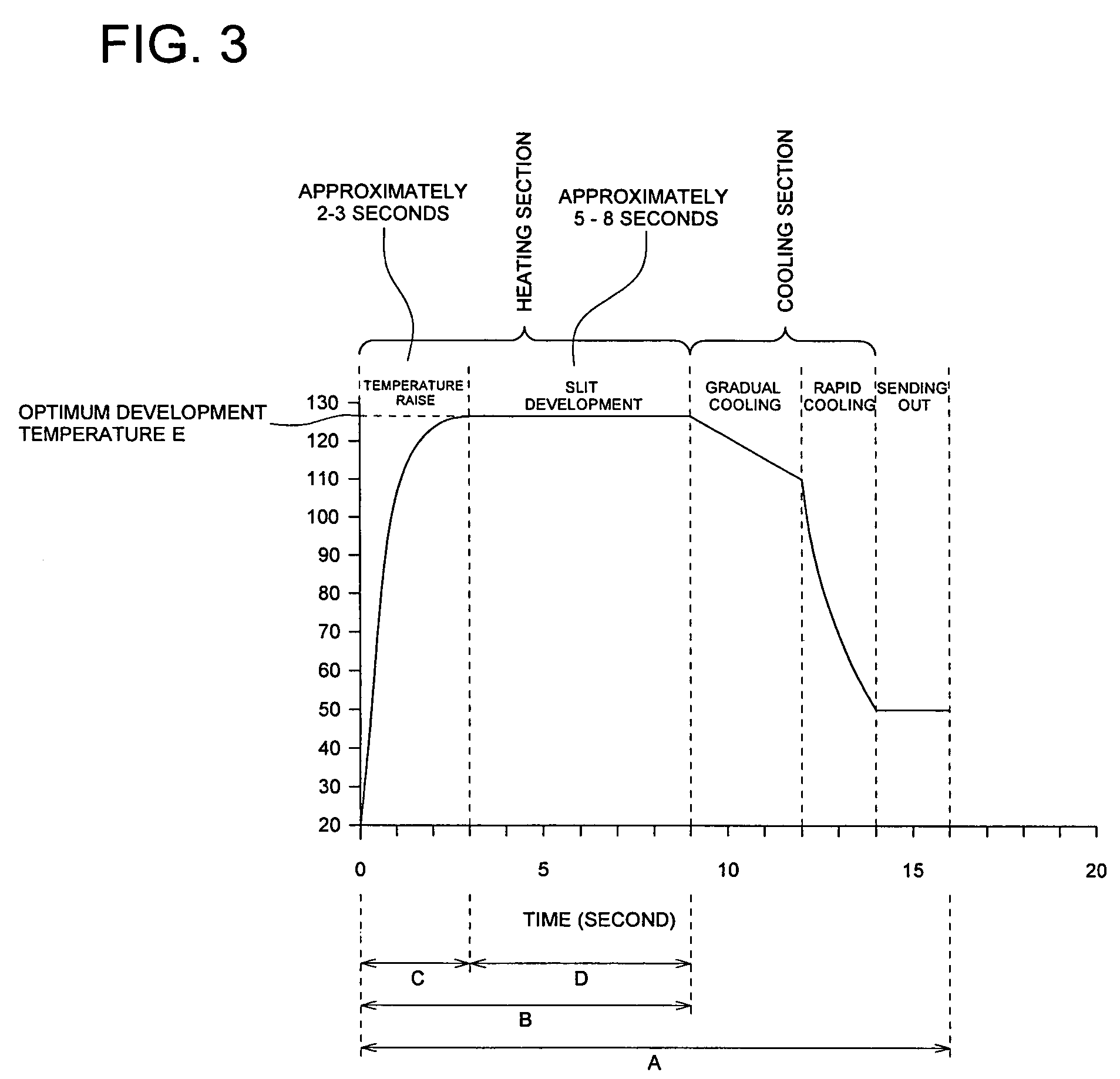Silver salt photothermographic dry imaging material, thermal development method of the same, and thermal development apparatus for the same
a technology of photothermographic and dry imaging material, which is applied in the direction of photomechanical equipment, instruments, photosensitive materials, etc., can solve the problems of deterioration of light irradiation image lasting quality, high demand for processing effluent reduction, and difficult to meet the requirements of processing, so as to achieve low odor, low cost, and the effect of reducing the interior contamination of the imager
- Summary
- Abstract
- Description
- Claims
- Application Information
AI Technical Summary
Benefits of technology
Problems solved by technology
Method used
Image
Examples
synthetic example 1
Synthesis of P-1
[0240]Charged into a reaction vessel were 20 g of polyvinyl alcohol (Gosenol GH18) manufactured by Nihon Gosei Co., Ltd. and 180 g of pure water, and the resulting mixture was dispersed in pure water so that 10 weight percent polyvinyl alcohol dispersion was obtained. Subsequently, the resultant dispersion was heated to 95° C. and polyvinyl alcohol was dissolved. Thereafter, the resultant solution was cooled to 75° C., whereby an aqueous polyvinyl alcohol solution was prepared. Subsequently, 1.6 g of 10 percent by weight hydrochloric acid, as an acid catalyst, was added to the solution. The resultant solution was designated as Dripping Solution A. Subsequently, 11.5 g of a mixture consisting of butylaldehyde and acetaldehyde in a mol ratio of 4:5 was prepared and was designated as Dripping Solution B. Added to a 1,000 ml four-necked flask fitted with a cooling pipe and a stirring device was 100 ml of pure water which was heated to 85° C. and stirred well. Subsequent...
example 1
>
[0702]A photographic support comprised of a 175 μm thick biaxially oriented polyethylene terephthalate film with blue tinted at an optical density of 0.170 (determined by Densitometer PDA-65, manufactured by Konica Corp.), which had been subjected to corona discharge treatment of 8 W·minute / m2 on both sides, was subjected to subbing. Namely, subbing liquid coating composition a-1 was applied onto one side of the above photographic support at 22° C. and 100 m / minute to result in a dried layer thickness of 0.2 μm and dried at 140° C., whereby a subbing layer on the image forming layer side (designated as Subbing Layer A-1) was formed. Further, subbing liquid coating composition b-1 described below was applied, as a backing layer subbing layer, onto the opposite side at 22° C. and 100 m / minute to result in a dried layer thickness of 0.12 μm and dried at 140° C. An electrically conductive subbing layer (designated as Subbing Lower Layer B-1), which exhibited an antistatic function, was...
example 2
[0764]Under coating was performed on a photographic support in which the both surfaces of polyethylene terephthalate film, having been colored with the following blue dye, biaxially stretched and thermally fixed, and having a thickness of 175 μm, had been subjected to a corona discharge treatment of 8 W·min / m2. That is, under-coat layer coating composition a-1 was coated at 22° C., 100 m / min, on the one surface of the photographic support so as to make a dry thickness of 0.2 μm, followed by being dried at 140° C. to form a photosensitive layer (an image forming layer) side under-coat layer (referred to as under-coat layer A-2). Further, under-coat layer coating composition b-1 was coated at 22° C., 100 m / min, as a backing layer side under-coat layer, on the opposite surface so as to make a dry thickness of 0.2 μm, followed by being dried at 140° C. to form a under-coat conductive layer (referred to as under-coat layer B-2) provided with a antistatic function on a backing layer side....
PUM
| Property | Measurement | Unit |
|---|---|---|
| thickness | aaaaa | aaaaa |
| thickness | aaaaa | aaaaa |
| thickness | aaaaa | aaaaa |
Abstract
Description
Claims
Application Information
 Login to View More
Login to View More - R&D
- Intellectual Property
- Life Sciences
- Materials
- Tech Scout
- Unparalleled Data Quality
- Higher Quality Content
- 60% Fewer Hallucinations
Browse by: Latest US Patents, China's latest patents, Technical Efficacy Thesaurus, Application Domain, Technology Topic, Popular Technical Reports.
© 2025 PatSnap. All rights reserved.Legal|Privacy policy|Modern Slavery Act Transparency Statement|Sitemap|About US| Contact US: help@patsnap.com



